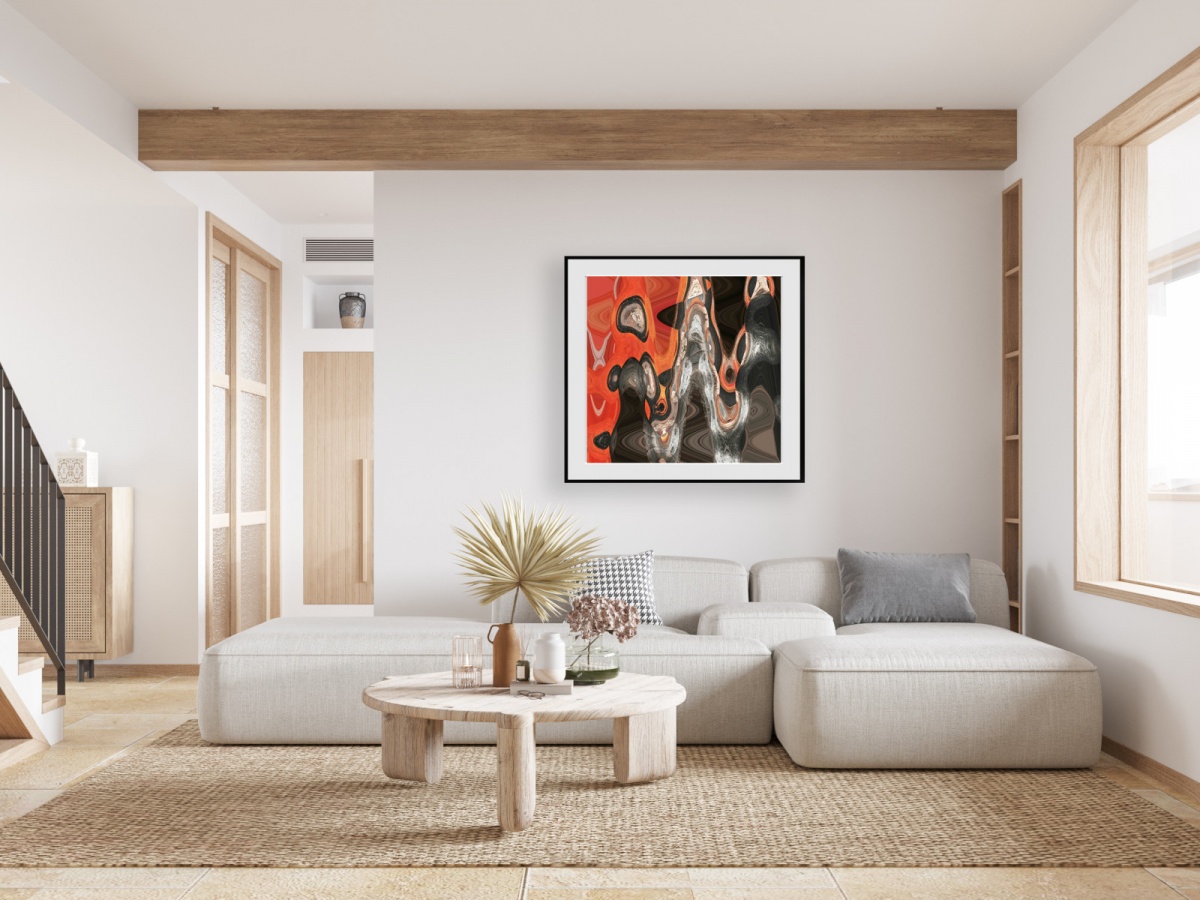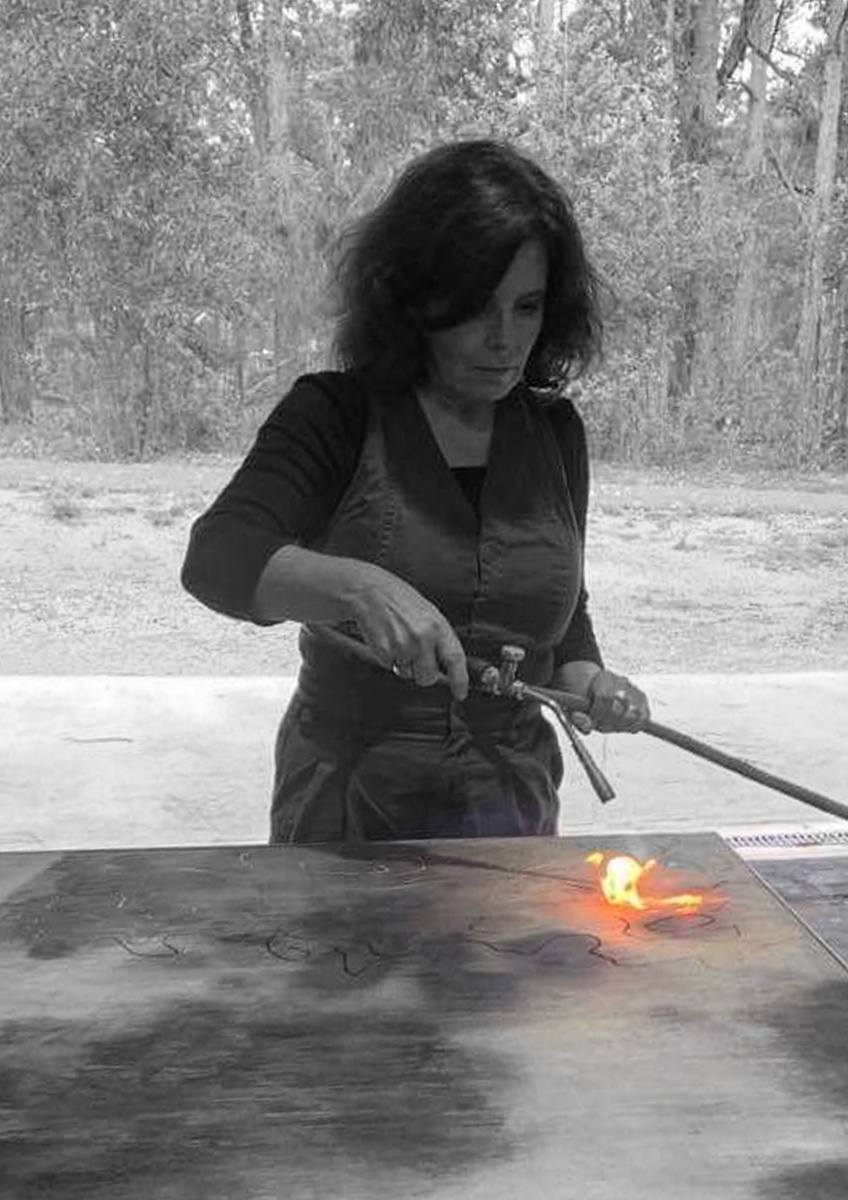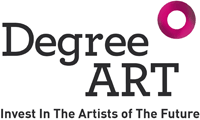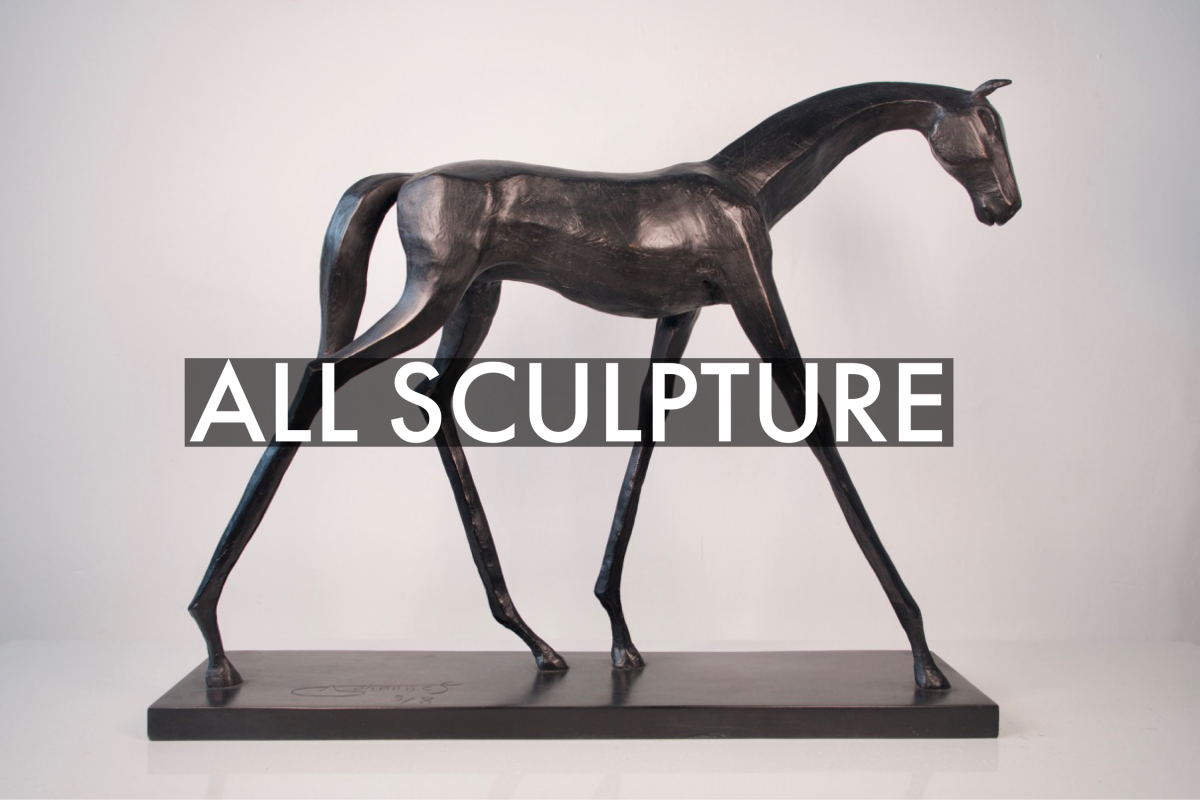Australian artist Katherine Boland works across the disciplines of painting, photography and digital media.
Since the 2019/20 Australian bushfires, Katherine has been compelled to make art with fire itself to raise awareness about climate change. In 2020, she was selected to participate in OUTPUT- Art After Fire - a pilot project supported by the Australian Department of Foreign Affairs and Trade through their Cultural Diplomacy Grants Program which supported artists in south east Australia and the American west to create artwork about their bushfire experiences. Katherine has exhibited throughout Australia and overseas and have been the recipient of numerous art prizes and grants, including the Heysen Art Prize for Interpretation of Place in 2009.

1) Which art movement do you consider most influential on your practice?
Arte Povera 1967–1972. Artists in this movement explored a wide range of materials beyond traditional ones like oil paint on canvas. Using throw away materials such as soil, rags and twigs, they aimed to challenge and disrupt the values of the commercialised contemporary gallery system. This sat with with my emerging political/philosophical world view in the 70s and no doubt influenced my decision to drop out of Art School, where I was studying Commercial Art, and leave the city to pursue an ‘alternative lifestyle in the Australian bush.
2) Where do you go and when to make your best art?
I go to my studio in the bush whenever I want use my blowtorch and pyrography tools to make art, a mob of kangaroos greeting me on arrival. Otherwise, I work at home overlooking the shifting light on Merimbula Lake as I create my digital art on my laptop.
3) How do you describe your 'creative process'?
I recently described my creative process as the ‘the love of my life’. It has provided me with joy, stimulation and solace as well as frustration and despair. One of the greatest Australian artists of the 20th century, Brett Whiteley, described the creative process as ‘difficult pleasure’, which says it all. Since the 2019/20 Australian bushfires, which devastated my region on the south east coast of Australia, I have been compelled to make art to raise awareness about climate change and the ecological perils facing the planet. When I’m painting and burning my paintings in my studio I work intuitively and am driven by the process. I was often unable to access my studio during the pandemic so I began to create digital art in lockdown at home. This is an entirely different but equally engrossing process in terms of developing concepts and learning the technical aspects of digital media and it has opened up a whole new world of creative endeavour.

4) Which artist, living or deceased, is the greatest inspiration to you?
Anslem Keifer.
5) If you weren't an artist, what would you do?
Architecture. Form and function. The ultimate and most challenging art form, in my opinion.
6) What do you listen to for inspiration?
The ocean, wind, and birds outside.
7) If you could own one artwork, and money was no object, which piece would you acquire?
Anselm Kiefer’s 'Abendland [Twilight of the West]' 1989. I visit this work at the National Gallery of Australia whenever I go to Canberra to see my daughter. The scale, the materials used and the concept behind it never ceases to amaze me.
8) If your dream museum or collection owner came calling, which would it be?
9) What is your key piece of advice for artists embarking on a fine art or creative degree today?
Believe in yourself. Work hard and consistently. Never give up. Learn to accept rejection.
10) What is your favourite book of all time (fiction or non fiction)?
Lincoln in the Bardo by George Saunders. A challenging read but wild.
11) If you could hang or place your artwork in one non traditional art setting, where would it be?
A light display on the sails of the Sydney Opera House of course!
12) What was the biggest lesson your university course or time studying taught you?
After 12 months at Art School in the 70s, I realised that everyone’s artwork was beginning to look the same. The students seemed to have discovered the artistic preferences of their tutors and were making artwork accordingly. Hopefully, things are different now. I’d say learn the foundations and then get out and develop your own style.
13) And finally, if we were to fast forward 10 years, where would we find you?
Doing exactly what I’m doing now. Anselm Kiefer summed it up when he said, 'Art is longing. You never arrive, but you keep going in the hope that you will.’
Learn more about Katherine and discover her collection of artworks.













